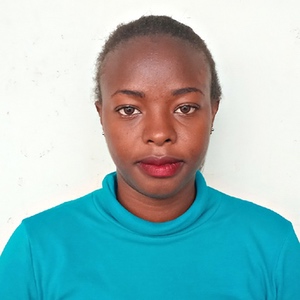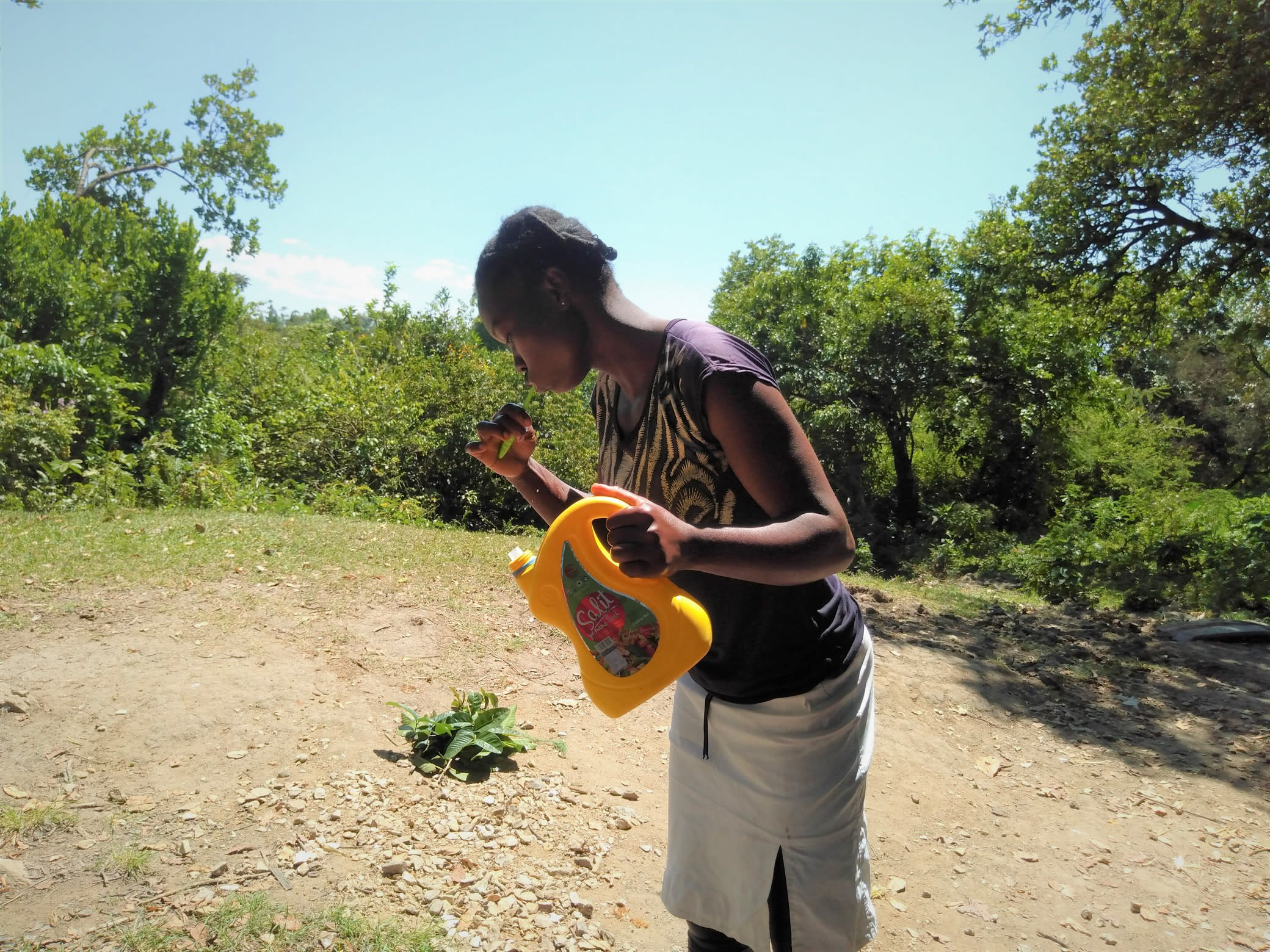Fedha Mukhwana Spring is found in Lunyi Village of Kakamega County.
The people in the community wake up very early in the morning to work on their farms and prepare their children to go to school. The domestic work is predominantly done by women.
A few young men work as bicycle and motorcycle taxis, in what is known as the 'boda-boda' business, to make money for their families.
The community living near the spring grow maize and sugarcane. The community is special because its members use farming to support their children's education. So, it is a hard-working community. They not only work hard, they work smart.
Water
The children and women are the people who usually come to collect water, using jerrycans and buckets.
Small containers, such as jugs or tins, are used to fill up the big jerrycans. In some cases, the containers are directly submerged under the water.
Dipping the containers inside the water source leaves it turbid and unsafe for human consumption. In addition to that, fingers get inside the water as they push containers under it, which transfers germs to the water. The spring is also open to contamination by animals and children who do put waste material at the water source.
This water is not safe for human consumption, yet these people cannot afford to protect the spring by themselves. Many people in this village have had diarrhea that can be attributed to consuming unsafe water from the spring.
"We urge the organization to consider us with the project so as to reduce on cases of waterborne diseases that are affecting us whereby most people have to travel for long distances in search for clean water, this may reduce such cases if we are considered," Mr. Shadrak Chivui said.
The majority of the spring users do not have big water storage containers. Consequently, they store water in the same jerrycans used to collect it. Most of the time, water is used to do household chores, like washing and cooking, immediately after it is fetched.
The containers are scrubbed with sand, steel wool, and tree leaves to keep them clean. Unfortunately, cleaning of the containers is done infrequently and in haste. As a result, steel wool particles remain inside the jerrycans. This is dangerous to human health when ingested.
The spring users are willing and ready to work with the organization to protect their water point.
Sanitation
Fewer than half of households in the community have latrines.
The available latrines are dirty and full of flies that have been attracted by the smell emanating from the latrines. Most of the latrines are almost full because many people will share a single facility.
We also observed that rubbish is disposed in the garden and it is not burned. It is left there, thus making the place smelly.
The general assessment of the community revealed that most of the people are willing to change the status quo and to climb up the hygiene and sanitation ladder.
Here’s what we’re going to do about it:
Training
Community members will attend hygiene and sanitation training for at least two days. This training will ensure participants have the knowledge they need about healthy practices and their importance. The facilitator plans to use PHAST (Participatory Hygiene and Sanitation Transformation), CLTS (Community-Led Total Sanitation), ABCD (Asset-Based Community Development), group discussions, handouts, and demonstrations at the spring. One of the most important topics we plan to cover is the handling, storage, and treatment of water. Having a clean water source will be extremely helpful, but it is useless if water gets contaminated by the time it’s consumed. Handwashing will also be a big topic.
Training will also result in the formation of a committee that will oversee operations and maintenance at the spring. They will enforce proper behavior around the spring and delegate tasks that will help preserve the site, such as building a fence and digging proper drainage. The fence will keep out destructive animals, and the drainage will keep the area’s mosquito population at a minimum.
Sanitation Platforms
On the final day of training, participants will select five families that should benefit from new latrine floors.
Training will also inform the community and selected families on what they need to contribute to make this project a success. They must mobilize locally available materials, such as bricks, clean sand, hardcore, and ballast. The five families chosen for sanitation platforms must prepare by sinking a pit for the sanitation platforms to be placed over. All community members must work together to make sure that accommodations and food are always provided for the work teams.
Spring Protection
Protecting the spring will ensure that the water is safe, adequate and secure. Construction will keep surface runoff and other contaminants out of the water. With the community’s high involvement in the process, there should be a good sense of responsibility and ownership for the new clean water source.
Fetching water is predominantly a female role, done by both women and young girls. Protecting the spring and offering training and support will, therefore, help empower the female members of the community by giving them more time and efforts to engage and invest in income-generating activities.

 Protected Spring
Protected Spring
 Rehabilitation Project
Rehabilitation Project






































